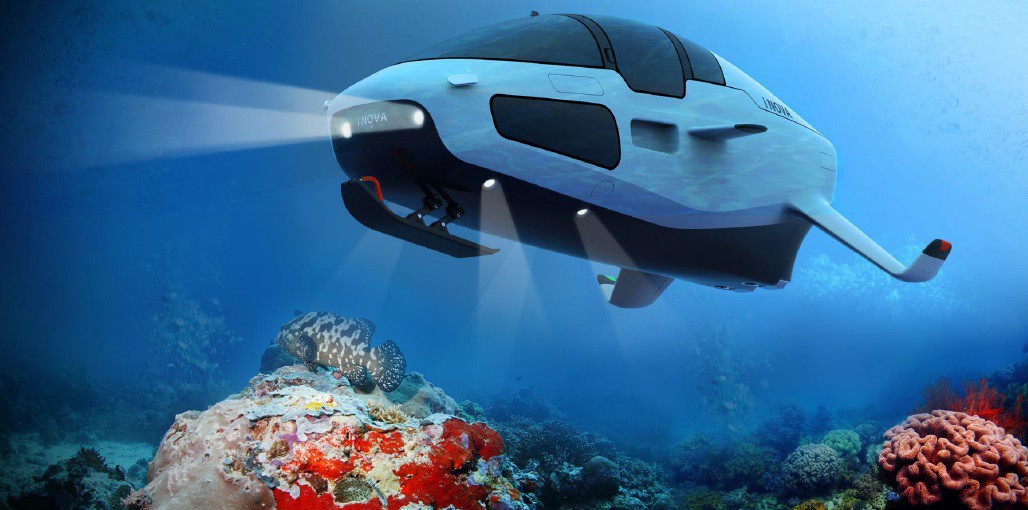

In May 2012, in a pool at the London School of Diving, Danish freediver Stig Severinsen set a world record for the longest breath held voluntarily underwater–a startling 22 minutes. Two years before, he’d managed 20 minutes in a tank full of sharks. But most people don’t have Severinsen’s fortitude and can only survive a minute or two underwater without assistance.
That’s where Alan Bodner comes in, an Israeli inventor who’s building artificial gills for a submarine that will be able to ferry four people to a depth of near 650 feet without canisters of air brought from the surface. Instead, it draws oxygen from the water around it, just like fish do.
There’s a long history of innovation in getting air to people below the surface. The first artificial aid was the diving bell, developed in the 16th century, which piped air into a rigid chamber, followed by diving suits and helmets in the 18th and 19th centuries. But it wasn’t until 1925 that Yves Le Prieur developed the first open-circuit scuba system, allowing untethered underwater exploration.
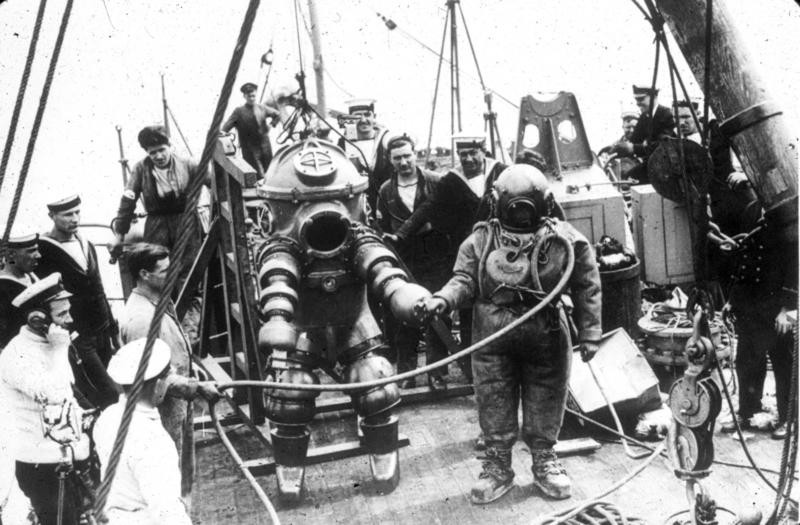
Le Prieur’s designs were perfected in 1942 by underwater explorer Jacques Cousteau who created the first successful, safe scuba system–the Aqua-lung. Twenty years later he predicted the arrival of a new species called Homo aquaticus, people who’d had surgeons equip them with gills. “The lungs will be bypassed and he will be able to live and breathe in any depth for any amount of time without harm,” he said.
Since then, the idea of drawing oxygen from water has surfaced repeatedly. In 1961, General Electric built a gill from a silicone membrane that could support a hamster, as long as the water was kept moving. Edward Cussler of the University of Minnesota build a dog-sized version in 1980 but passed out during human tests (on himself) when it failed to deliver sufficient oxygen. Fuji Systems in Tokyo built a fridge-sized unit that could support a human, but it won’t operate below about 30 feet as pressure dissolves vital nitrogen into the water, increasing the proportion of oxygen to toxic levels.
Bodner’s solution is completely different. “I use a centrifuge to create low pressure underwater and this causes dissolved air to change phase from liquid into gas, which is then drawn into a container for a person to breathe,” he explained. It extracts not just oxygen from the water, but nitrogen and other gases, too–yielding a breathable mix containing about 34 percent oxygen. “This will enable humans, essentially, to breathe underwater without taking compressed air tanks with them,” he added. “All they need is a power source.”
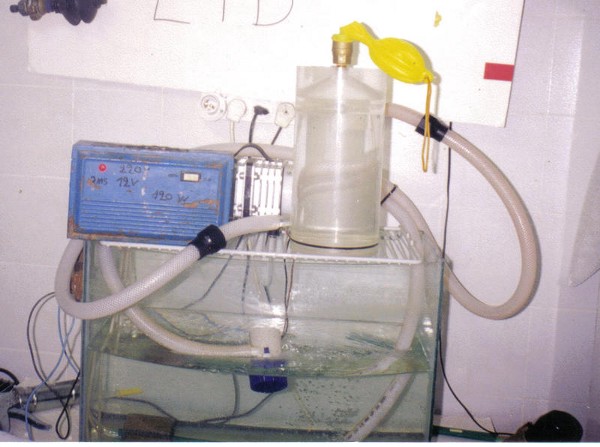
He’s been tinkering with the technology, which he calls Like-A-Fish, for more than a decade now–hitting headlines in 2006 with his first prototype. He was inspired after seeing a sci-fi movie where two characters pull mouthpieces from a backpack and wade into a lake. “My son asked me if this is possible, and I’m both an engineer and a diver, so I said, “‘let me think about it,’ ” he said. “I knew that fish breathe air underwater, so there must be some kind of air underwater. I checked out how much air is underwater, how much air humans need each minute, how much energy is needed to separate this air from the water. I’m an engineer and I have the tools, so I did the calculations and I said–yes, it is possible, why not?”
Since 2006, Bodner has refined the design significantly and added another module that cleans CO2 from the air and either releases it as bubbles or dissolves it back into the water. “We spoke to the military folks in submarines, and they said that it’s not enough to provide oxygen–this is just half a solution,” he said. At the Human Underwater Society convention in January 2015, he showed off the latest version–a cylindrical device about 23 inches long and nearly eight inches in diameter, which can process about 132 gallons of water per minute to provide one quarter gallon per minute of breathable air.
Bodner has long-term plans to create an underwater jetpack of sorts, which would allow divers freedom limited only by battery life, but he thinks that a more practical first step would be getting it installed on a boat. That boat is the in-development i-Nova “Atlantis Seahorse,” which its Italian creator Giuseppe Carusi (who previously worked on the Bionic Dolphin) describes as “a hydrofoil which is also a submersible.” It fits four people inside a hermetically-sealed cockpit, which is equipped with underwater cameras, sonar, spotlights, a hi-fi stereo connected to hydrophones and even an inbuilt refrigerator.
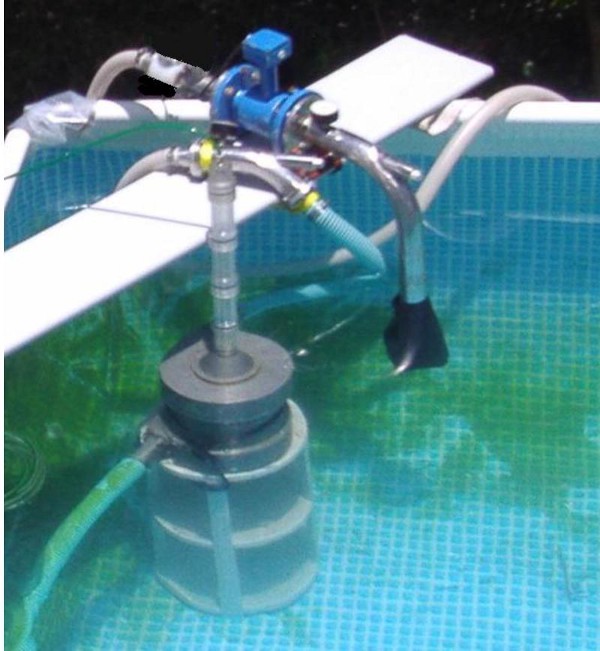
The most innovative aspect of the craft, of course, is the air system. People sitting around in a submarine consume about half as much air as a diver does, so the four-person Atlantis needs just two of Bodner’s Like-A-Fish modules to operate–powered by the boat’s batteries, but contributing to propulsion. “It has almost zero effect regarding energy on the submersible,” Bodner said. “It comes out as 10 percent of what they use anyway for propulsion.”
Speaking of propulsion, it’s powered by latest generation lithium-ion batteries that drive two 40-horsepower electrical engines, attached to custom-built hydrojet units. Carusi says that’ll give it a top speed of about 50 feet per second above the water and eight feet per second below. At full speed, the batteries should last at least four hours, with battery life increasing if you go slower. Right now, his proposed design is undergoing fluid dynamics simulations to work out the exact shape for production, and Carusi says that it’s only really been recently that battery and motor technology has developed to such an extent that allows him to begin construction. “This has been on the drawing board for a very long time,” he added.
Bodner says his Like-A-Fish technology can operate all over the world, down to about 650 feet where the amount of oxygen dissolved in the water falls off sharply (though the sub itself has a depth limit of 130 feet). There are a few areas of the seas, however, where the water contains almost no oxygen at all due to agricultural pollution–which the sub will need to avoid. These “dead zones ” often occur at the mouths of river deltas and are mostly free of marine life. Excessively polluted seas may also prove dangerous for the submersible. “It may get into the air. I don’t know yet. So if you put in a scrubber, maybe it’ll take care of that. It’s too early for me to say what happens,” said Bodner, adding: “To sum it up–if the waters aren’t suitable for fish, it’s not suitable for Like-A-Fish.”
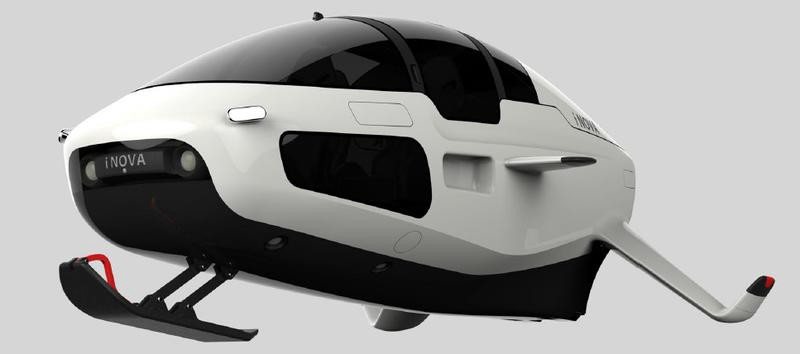
The crucial thing that Carusi and Bodner need to develop their submarine further is cash. They’re applying to a joint Italian-Israeli government fund for a grant, and taking a five-foot scale model of the Atlantis to the Expo Milano 2015 to try and drum up some support there. But they’re excited to show off their creation to a wider audience, and if all goes well, then a full-scale prototype could be in the water as soon as the start of 2016.
“It’s been frustrating for many years,” said Bodner. “At some points I almost gave up, but now it seems like we have a breakthrough at last. It’ll be exciting to see it on a real boat, really working!” Carusi added: “Right now we’re starting with four people. But you can go bigger. We’re looking in the future at having underwater shuttles to taxi people from one place to another.”
“We do believe that we will be developing a technology that will actually create a small revolution in the way we go underwater and overwater,” Carusi said.


How We Get To Next was a magazine that explored the future of science, technology, and culture from 2014 to 2019. This article is part of our Going Places section, which looks at the impact of transportation technology on the modern world. Click the logo to read more.
